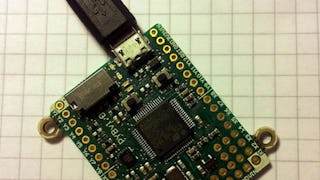This comprehensive course is designed to equip participants with the knowledge and practical skills required to design and implement Cyber-Physical Systems (CPS) tailored for industrial applications. From foundational concepts to hands-on development using Embedded C programming on ARM processors, participants will explore the interdisciplinary nature of CPS, demystify its complexities, and gain the expertise needed to navigate the evolving landscape of smart systems.


Design of CPS with ARM processor using Embedded C
包含在 中
了解顶级公司的员工如何掌握热门技能

积累特定领域的专业知识
- 向行业专家学习新概念
- 获得对主题或工具的基础理解
- 通过实践项目培养工作相关技能
- 获得可共享的职业证书

该课程共有4个模块
This module aims to provide a comprehensive understanding of Cyber-Physical Systems (CPS) by exploring its various facets. From the foundational components of embedded processors and memory systems to advanced topics such as wireless communication, cybersecurity, and cloud-edge computing, participants will gain insights into the interdisciplinary nature of CPS. Through a blend of theoretical concepts and practical applications, this module aims to demystify the complexities of CPS, enabling participants to navigate the evolving landscape of smart systems.
涵盖的内容
16个视频2篇阅读材料1个作业
This module provides a hands-on approach to the design and development of Cyber-Physical Systems (CPS) components in industrial applications using Embedded C programming. Participants will delve into the intricacies of Advanced RISC Machines (ARM) architectures, with a specific focus on the STM32F4XX Microcontroller. The module covers practical aspects such as getting started with the IAR Embedded Workbench, interfacing ARM Cortex Processors with various peripherals, and developing drivers for essential components like UART, ADC, LCD, Matrix Key, Buzzer, Relay, and STEPPER Motor. Through a series of demonstrations, participants will gain practical insights into implementing CPS components for real-world industrial applications.
涵盖的内容
25个视频1个作业
This module offers a hands-on exploration of the design and development of Cyber-Physical Systems (CPS) components for industrial sensors and control, focusing on practical applications using Embedded C programming. Participants will delve into the architecture of the STM32F103F, an ARM Cortex processor, and gain practical insights by working with the STM Cube IDE. The module includes demonstrations on interfacing sensors such as OLED, Humidity & Temperature Sensor, Ultrasonic Distance Sensor, and Hall effect sensor with the ARM Cortex processor. Participants will acquire skills to implement real-world CPS components for industrial sensor applications.
涵盖的内容
14个视频1个作业
Building on the foundations laid in the first part of the module, "Demo on Design and Development of CPS Components in Industrial Sensors and Control using Embedded C," this second part continues the exploration of practical applications in industrial sensors and control. Participants will engage in hands-on demonstrations and learn how to interface various sensors — Sound, Current, Voltage, Soil Moisture, Tilt, and Touch — with an ARM Cortex processor. Through these practical sessions using Embedded C programming, participants will deepen their understanding of sensor integration and control mechanisms in Cyber-Physical Systems (CPS) for industrial applications.
涵盖的内容
15个视频1个作业
获得职业证书
将此证书添加到您的 LinkedIn 个人资料、简历或履历中。在社交媒体和绩效考核中分享。
位教师

提供方
从 Electrical Engineering 浏览更多内容
 状态:免费试用
状态:免费试用 状态:免费试用
状态:免费试用 状态:免费试用
状态:免费试用L&T EduTech
 状态:免费试用
状态:免费试用
人们为什么选择 Coursera 来帮助自己实现职业发展




常见问题
To access the course materials, assignments and to earn a Certificate, you will need to purchase the Certificate experience when you enroll in a course. You can try a Free Trial instead, or apply for Financial Aid. The course may offer 'Full Course, No Certificate' instead. This option lets you see all course materials, submit required assessments, and get a final grade. This also means that you will not be able to purchase a Certificate experience.
When you enroll in the course, you get access to all of the courses in the Specialization, and you earn a certificate when you complete the work. Your electronic Certificate will be added to your Accomplishments page - from there, you can print your Certificate or add it to your LinkedIn profile.
Yes. In select learning programs, you can apply for financial aid or a scholarship if you can’t afford the enrollment fee. If fin aid or scholarship is available for your learning program selection, you’ll find a link to apply on the description page.
更多问题
提供助学金,




